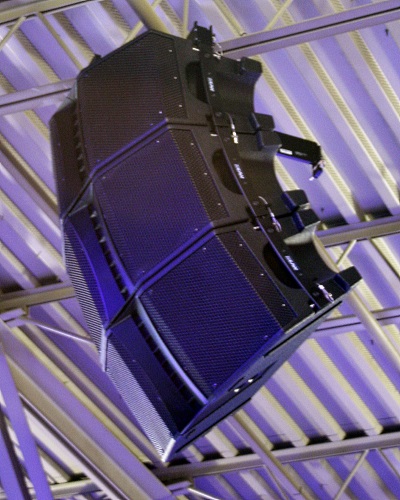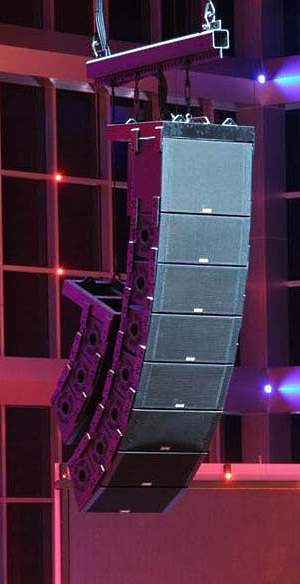What’s wrong with this scenario? A clean stream of audio, processed through state-of-the-art digital processing devices and amplified by an advanced power amplifier, is delivered to the audience through a cone of paper pulp inside a wooden box.
The weak link in this chain is the box, more commonly known as a loudspeaker. The final sound quality of any system is wholly dependent on the ability of loudspeakers to reproduce the glorious audio presented to it by the upstream components.
In the past century, commercial loudspeakers have gone through slow, steady advancement in development. In contrast, the electronic portions of systems have undergone fundamental changes in physical attributes and methodology at nearly the speed of light.

What’s Inside?
A loudspeaker’s task is to convert the electrical signal of the audio system into acoustic energy that humans perceive as sound. In most instances, the closer this output emulates its input, the better because a known value of input will remain true on the output (i.e., high fidelity).
It’s also important to understand that sub-standard input sources will always detract from sound quality, regardless of the excellence of any given loudspeaker.
Professional loudspeakers usually contain multiple drivers (components) in a single enclosure. The most common design is referred to as “two-way,” with two components teaming up to provide output. Two-way designs usually consist of a 15-inch or 12-inch diameter cone woofer and a smaller-format (1- to 1.5-inch) compression driver coupled to a horn offering a defined coverage pattern.
For woofers, which reproduce the lower frequencies, the enclosure provides a plane of operation, a means of directly radiating output into the surrounding atmosphere.
In contrast, compression drivers, which handle high frequencies, would be practically inaudible if directly sent into a coverage space. Thus the driver must be mated to a horn to match the driver’s output with the surrounding atmosphere by unfolding the soundwave at a defined rate and dispersion pattern. As a result, the efficiency of the horn/driver setup is raised dramatically, with only a few watts of input necessary to deliver room-filling levels.

Conventional loudspeakers work much like a car engine, with the cone action of the drivers akin to the movement of the pistons. The back-and-forth motion of each is the source of power needed to accomplish the work – turning a drive shaft or propagating sound waves.
Auto engines use gasoline as fuel, while loudspeakers use the electrical output of a power amplifier. In both cases, matching the fuel to the motor is essential to optimizing the performance.
Loudspeakers and power amplifiers have a give and take relationship, with the amplifier pushing against the loudspeaker’s natural state of equilibrium (equal pressure inside and outside of the cabinet) and the loudspeaker pushing back against the amplifier’s varying output.
Given the plethora of loudspeaker brands available, finding the best unit for a given application can be akin to the proverbial needle in the haystack. Narrowing the field is made easier by the tenacity of reputable manufacturers’ adherence to industry standard specifications. These specifications include ratings for frequency response, sensitivity, power handling, and directivity.















